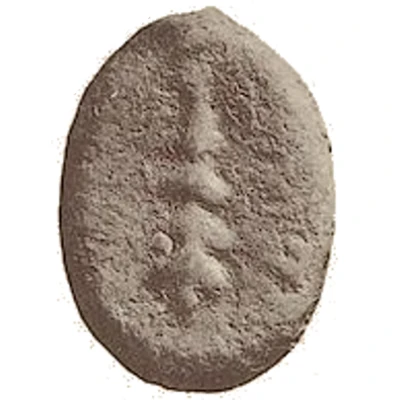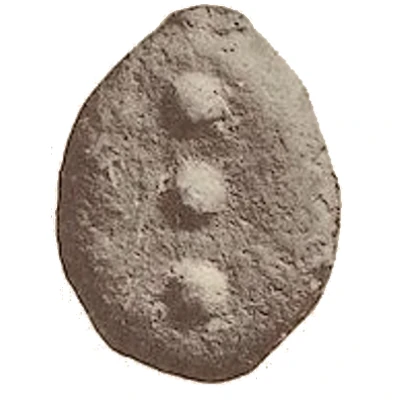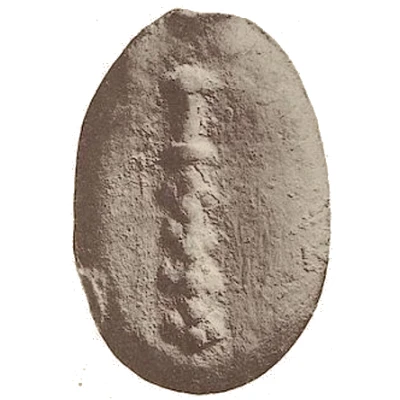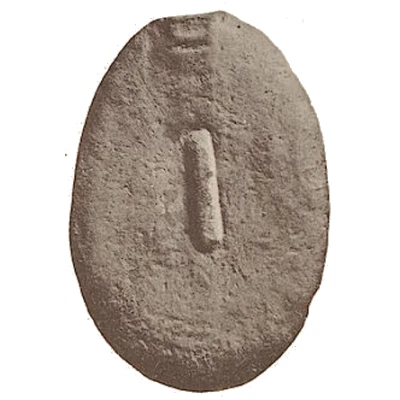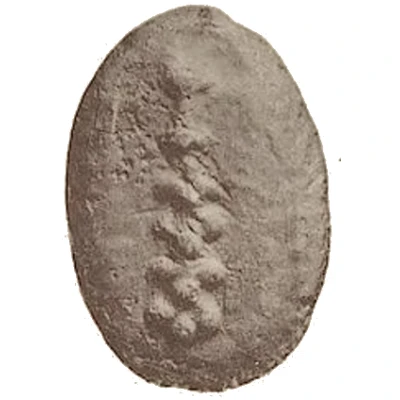
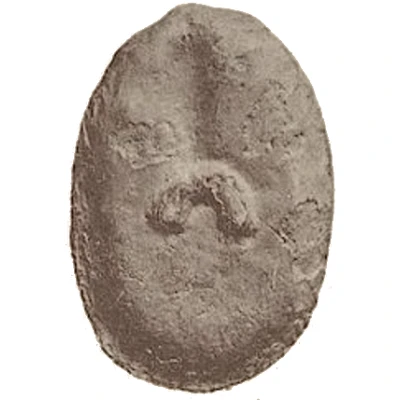

© Ernst Haeberlin; 1910. "Aes Grave". Joseph Baer, Frankfurt, Germany (CC0)
½ As 225 BC - 213 BC
| Bronze | 66.40 g | - |
| Issuer | Umbrian uncertain city |
|---|---|
| Type | Standard circulation coin |
| Years | 225 BC - 213 BC |
| Value | ½ As = 1 Semis |
| Currency | As (circa 225-213 BC) |
| Composition | Bronze |
| Weight | 66.40 g |
| Size | 49 mm |
| Shape | Oval |
| Technique | Cast |
| Demonetized | Yes |
| Updated | 2024-10-10 |
| Numista | N#182387 |
|---|---|
| Rarity index | 100% |
Reverse
Value.
Lettering: U
Translation: 1/2
Edge
Plain
Comment
This type measures around 35x49 millimetres.These coins were originally attributed to being from Umbria; however, some sources suggest these are actually from Volsinii, Etruria, since that city is near the centre of the majority of the spot-finds if any outliers are ignored.
Interesting fact
The Umbrian uncertain city coin , which was minted between 225 BC and 213 BC, features a unique design on its reverse side. Instead of the usual depiction of a deity or a mythological figure, this coin bears an image of a large ear of wheat, which was a symbol of abundance and prosperity in ancient times. This design choice was likely intended to convey the idea of a bountiful harvest and the city's agricultural wealth.
